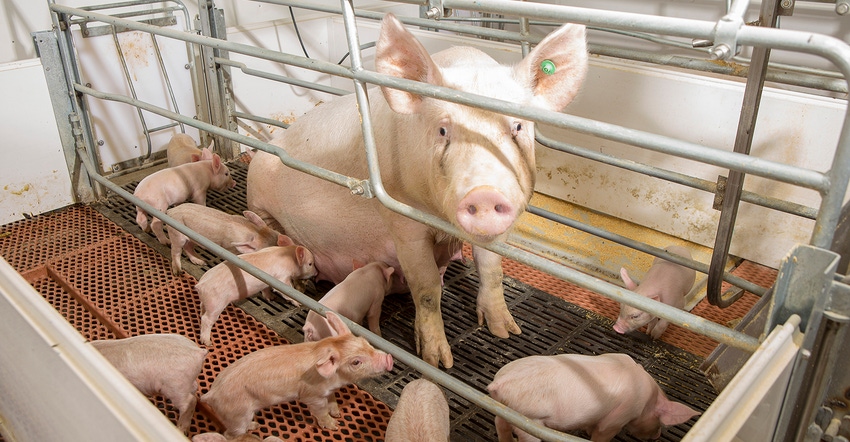Colostrum samples indicated induction reduced fat content, increased lactose content.

Farrowing induction, using prostaglandin (LUT) followed by an injection of oxytocin (OT), is a useful tool to decrease stillbirths, prevent difficult births and postnatal mortality. However, recent research has found OT administration may be negatively impacting fetal oxygen supply during parturition, potentially from umbilical cords breaking prior to birth, resulting in increased preweaning mortality.
Purdue University Associate Professor of Animal Science Kara Stewart and several Purdue graduate students recently conducted two studies to determine if various induction protocols are in fact impacting umbilical cord breakage and fetal blood parameters at birth.
The first was a pilot project performed at Purdue with 58 litters, assigned to one of three treatments:
No induction (NO)
2 cc LUT administered on day (d) 114 of gestation followed by 1 cc OT 24 hours (h) later
2 cc LUT administered on d 114 of gestation followed by 0.5 cc OT at 6 and 12 h later
Piglet umbilical cord blood and farrowing data was collected at birth. There were no differences in total born, number born alive, stillborns, mummies or assistance needed during farrowing. Average daily gain (ADG) numbers were also similar across treatments.
Stewart says there was a difference in the length of farrowing where the sows that had received a full dose of OT at 24 h after LUT had a higher or longer farrowing duration, but induction did increase the number of animals that farrowed by d 115.
There were also some differences in birth weights per treatment, but because a small number of litters was included in the study, the researchers considered it to be a random effect
"One thing we did notice is we took colostrum samples from the sows while they were farrowing and induction did reduce fat content and increase lactose content in the colostrum samples," Stewart says. "As a sow transitions from colostrum to whole milk usually her fat content goes down and lactose goes up so that's an indicator of a transition from colostrum into whole milk. I would perceive this as slightly a negative impact of induction that these sows, that were induced, were transitioning out of colostrogenesis and into whole milk production earlier."
The blood samples taken from the piglets indicated hypoxic events in every single treatment. While some of the treatments had different indicators of hypoxic events, Stewart says pretty much some amount of piglets in every treatment had some sort of oxygen deprivation during the birthing process.
"We did notice that piglets that are born later in the birthing order all tended to have more hypoxic indicators, so they had more stress during the birthing process, and piglets born to older sows also had more indicators of hypoxia," Stewart says.
A commercial trial follow-up was then conducted with The Maschhoffs with 297 litters assigned to four treatments:
Control NO
1 cc LUT on d 115 of gestation followed by 1 cc LUT 6 h later
1 cc LUT on d 115 of gestation followed by 0.25 cc OT 6 h later
1 cc LUT
Farrowing data and subsequent reproduction performance was collected. While blood sampling was not taken, Stewart says the data collected showed induction had little effect on the duration of farrowing, number born alive, total born, stillborn, mummies, litter weights, mortality, average daily gain, wean-to-service and subsequent reproductive performance.
"The few things that we did find were that farrowing induction increased the likelihood of farrowing on d 115," Stewart says. "It did increase piglets requiring assistance when LUT was used alone."
All induction treatments again had about a 1% lower colostrual fat in colostrum samples.
"Lactose was not measured, but it was anticipated that they were reducing their colostral fat and switching over to lactose production as well," Stewart says. "So maybe the same impacts there on colostrogenesis."
About the Author(s)
You May Also Like





